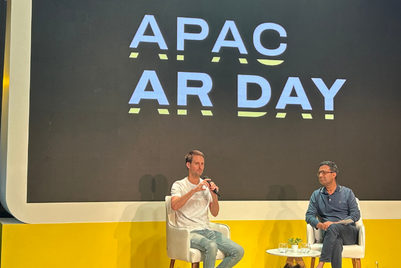
As a CMO, I understand how much brands must keep impactful content humming along on a weekly, if not daily, basis. Content is a marketer’s lifeblood for driving awareness, generating leads, growing sales and building loyalty.
Yet, brands often struggle with content creation. This is especially true today, as brands have to scale for an incredible amount of content to serve their needs across TikTok, Instagram, Snapchat, Pinterest, Facebook, Twitter, Twitch, Discord, YouTube… not to mention email, in-store… you get the picture. Marketing best practices hold that each social platform needs one to seven pieces of fresh content weekly for optimal performance. Which is why some marketers milk dozens of content pieces from a single pitch deck.
The good news is that if you have the right talent in your organization, you can employ different strategies to fill the content void and ensure you’re getting the right messages to the right audiences.
Here are three ways to scale marketing and creative excellence.
Expand your creative team
Fueling the insatiable content engine is on the minds of many CMOs and CCOs, who face a need to create an astronomical amount of both dynamic and static content, whether it be for organic content, social channels, paid ads or the myriad of other formats. What’s more is that much of this content needs to be custom-made for each channel. Meeting the volume and level of nuance is too much to ask of most marketing and creative departments, which are skeleton crews more often than not.
Historically, senior marketers have tended to hold their creative responsibilities dearly, creating a bottleneck for reviewing creative assets to ensure maintenance of a consistent message, look and feel. I no longer think this is necessary — and it may even be a bad strategy.
To establish a more scalable approach, marketers should create a culture that leads with an inclusive mindset where anyone can come up with a brilliant idea, a winning image, a tagline that jumps off the page or the next asset for a social campaign. Communicate to your team that they have the license to share their latest social gem, favorite meme or GIF because most, if not all of them, are content creators in their personal lives already. They can come up with ideas that are fully baked or can serve as inspiration for other team members to bring to fruition.Then, you can designate a digital forum or workflow to share ideas. Some of you might be thinking this all sounds unwieldy for brand consistency, and I get it: 70% of marketers struggle with creating visual assets that are consistently on brand. Due to these concerns, yielding creative control to a larger group may seem daunting for brand custodians. But there are ways to prevent your team from going rogue.
Implement guidelines in a creative hub and focus on enablement
As a marketing leader, you need an easily accessible “brand bible,” “brand kit” or some kind of resource that includes guidelines to help your team avoid inconsistencies. It should be available in a centralized digital location — a creative hub — so all of your team members can access it easily, putting the right colors, fonts, layouts or tone at their beck and call. Guidelines and resources will also eliminate the time-consuming task of educating your team on how to apply every ingredient for on-brand designs every single time.
To create these guidelines, ask: What are the right templates, guidelines and training, they need to create content that is on-brand and impactful? It’s crucial they have the right tools at their fingertips and believe in the brand’s purpose. Then, it’s about having the right safeguards and approvals processes before content gets shipped.Beauty retailer Ulta offers a roadmap to how organizations can inspire their staffers to become purpose-driven content creators. The brand has invested $50 million in diversity, equity and inclusivity, and a staple of its DE&I program is amplifying underrepresented voices. Ulta then walks the walk by enlisting staffers from a variety of roles, from store associates to e-commerce site operations experts, to offer their personal beauty tips and — in some cases — their likeness to digital content efforts.
Take advantage of emerging technology
We’ve all read about people experimenting with generative AI platforms to see their capabilities around discovering and creating content. AI is the next frontier and should be embraced to radically enhance marketing output across various functions. While we still have a lot to learn about the strength of AI, I predict it's going to be a game-changer, especially in significantly improving the productivity of marketing and creative teams.Some practitioners may consider using AI-powered tools to be “cheating.” It’s not. With AI tools starting to bloom across the business world, creatives must welcome them — as they will become digital personal assistants, taking care of tasks and eliminating grunt work in favor of masterwork.
A creative director at one of my favorite New York agencies told me recently that he’s been treating AI as an additional member of his team — not a replacement, but another creative to riff off, generate ideas and strengthen his whole team.
If you want to circumvent the dreaded content vacuum, you need to empower everyone on your team to be a content creator, operationalize the process for consistency and reimagine your approach to brand newsrooms. Ultimately, your investments will elevate your brand's output with greater efficiency and productivity.
Zach Kitschke is the CMO at Canva.


.jpg&h=334&w=500&q=100&v=20250320&c=1)


.png&h=334&w=500&q=100&v=20250320&c=1)





.png&h=334&w=500&q=100&v=20250320&c=1)







